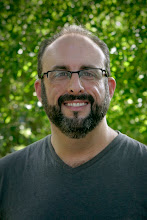
My dog Kai and I are making a small life in the woods of New Hampshire. When I am in pain, he seems to know it and I wish I knew more about how dogs can sense things like that. The dog I had to give away when I went to the monastery would sleep in my office at the church, but when a parishioner was in my office and in pain, Puck would wander over with stealth as if a ghost and put his tiny Yorkshire Terrier face on their shoe as he lay down next to them on the floor - from which he would stare up at them in silent solidarity.
Kai also stares. And dogs tend not to stare in general. They glance but they do not stare (well, sometimes when putting dinner out they do, but that is entirely different.) Dogs do not like being stared at. They like a glance and both happily and frequently give one back but they seem to break their no-stare rule when a person is in pain. They look at you in long-lasting solidarity.
Feeling the pain of life seems to be the key ingredient to growth. I wish it were some other way. Indeed it can be another way for those sad souls who have found ways to so compartmentalize their inner life that pain is not really felt as much as it is ordered and labeled and placed neatly in various mental shoe boxes in the crawl-spaces of the mind. For those people, growth is stunted or delayed until the boxes are opened and dealt with or until those sad implosions when a person opens the closet of their mind or it is busted open by life and all those shoe boxes tumble down on them and open at once in a tsunami of devastation.
But if we can feel pain as it comes to us without anesthetizing it with any of our modern, American intoxicants like work or sex or food or codependency or shopping - if we can really feel deeply the pain in the quiet of our prayer life and hand it up to God with tear-stained faces and helpless - yes, I mean really helpless begging for help - then there can be hope.
Hope is so different than faith. So much has been written about faith. It is the diva of Christian theology, walking red carpets of churches in shimmering Hollywood ball gowns and high heels and tiaras. But hope huddles in the crowds in a trench coat and bad hair under a floppy hat. Hope simply stands there keeping fear at bay - but only just.
Kai, when he sits there present to me but also staring off into who-knows-what, seems to be so rooted in the present moment that he becomes an icon to me - inviting me to do likewise. Faith has always had a futureish feeling to me. I like faith - don't get me wrong - I mean I am a priest and all, and it is a major part of my prayer and of my experience, but hope has a present-humility about it which appeals to me and soothes me when my mind keeps wanting to dart down the road of the future like an excited puppy or a nervous stock-trader.
When Kai just sits there and stares off into the present, he invites me out of my anesthesia (my drug of choice tends to be over-scheduling my life and my day) and into a safe-house of love in which I can sit with my pain and despair and feel it so deeply that it teaches me things I need to know about life. Not a lot but enough.
While I was a monk, I became the priest I had always wanted to become. While I am a potter on a farm in New Hampshire I have become the monk I had always wanted to become. And now, in my work in the church, I am finally becoming the man I had always wanted to become.
And in the end, I can see that life has been the anvil and pain has been the hammer and God has been the forge which is making this tool called "me." And though I find the blows hard and the fire hot and the anvil unyielding, I can sense that my "becoming" is well on its way.













